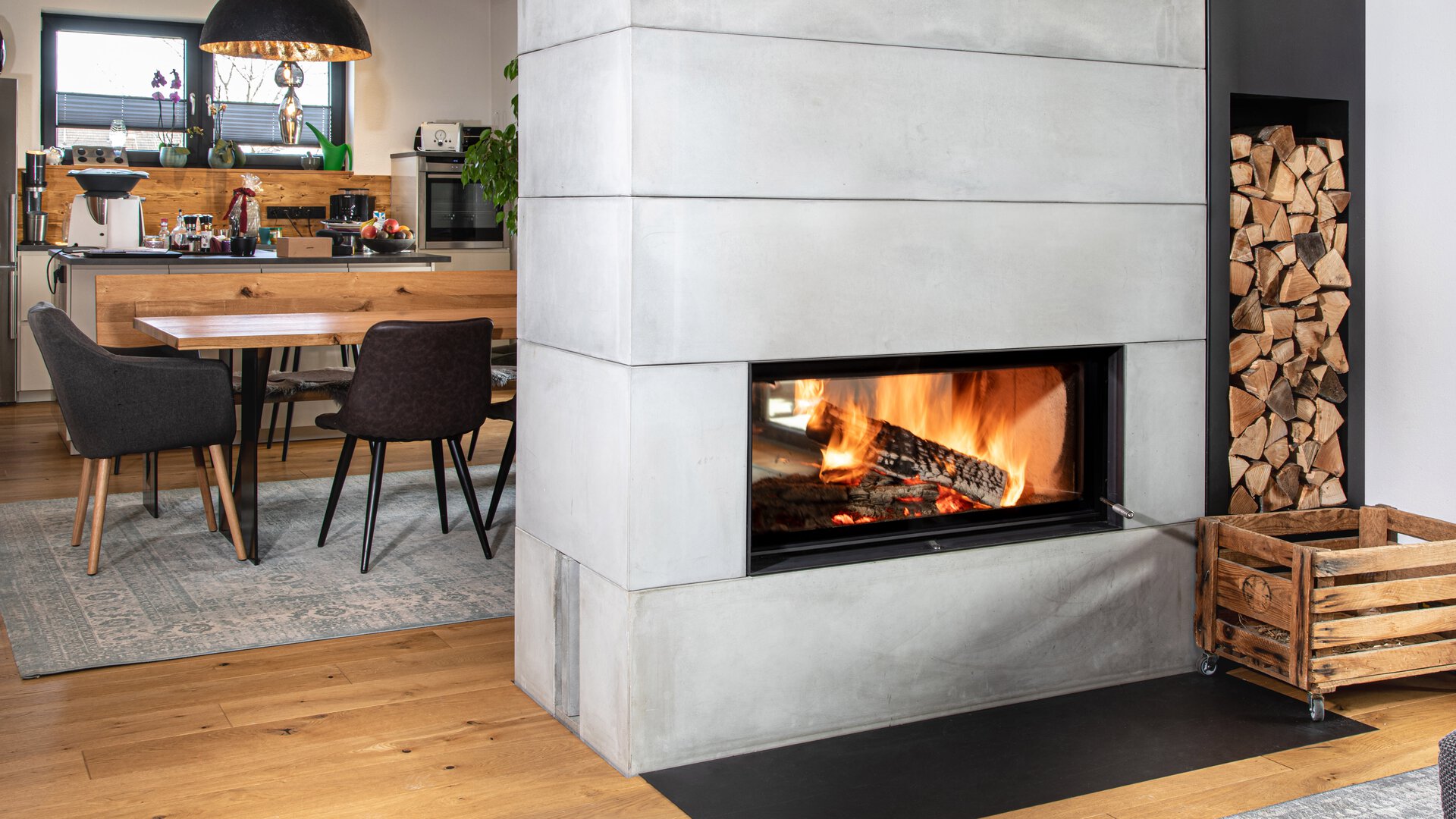Kit system masonry heater
Maximum heat storage with a system
The kit for the expert when things need to be done quickly
BRUNNER kit system masonry heaters are similar to a kit system, but they are not intended for the do-it-yourselfer, but for the professional, i.e. the furnace builder. He processes them if no individual shapes and floor plans are planned and combines the selected combustion chamber of the masonry heater with module storage and cladding kit. The concrete-look surface can then be painted or plastered. There is no quicker and cheaper way to build a sturdy storage heater.
For primarily warmth with atmosphere
The kit system masonry heater is equipped as a water-bearing masonry heater with a large viewing glass. There is a lot of warmth behind it: the sturdy BRUNNER kit system masonry heater BSG is used when no individual shapes or floor plans are foreseen. Although a storage heater usually requires longer heating times due to its mass, with the BSG you can enjoy the furnace heat shortly after it is lit - thanks to the large viewing window.


Storage for (kit system) masonry heaters
A storage heater is generally heated no more than twice a day. This ease of use is made possible by BRUNNER masonry heater fireboxes with fill loads of up to 18 kg. In order to avoid overheating of the living area during combustion, the produced heat is collected in a storage with heating gas flows, and is released as radiant heat at the end of combustion with a time delay of many hours. The required storage is adapted in size and design to the combustion chamber or the fuel load. Top storage requires smaller fuel loads.
Modular storage bricks
BRUNNER ModulSpeicherSteine (MSS) allow for the creation of streamlined storage systems with a high mass. Due to the high bulk density, up to 20 % more mass can be processed compared to conventional fireclay. Ideal for compact, heavy storage blocks required for large masonry heater combustion chambers. Depending on the design of the furnace cover, average surface temperatures of 35 - 50 °C are achieved. This corresponds to a specific heat output of 150 - 300 W/m2. With a stove surface of 4 - 7 m2 , this results in a heating output of approx. 1000 - 2000 W, which is delivered to the room over many hours.
Easy operation
Simple and uncomplicated
Manually operated or automated
With just one control (lever), the combustion air can be regulated manually. Effortless and easy to understand. The symbols on the viewing glass provide additional support.
Of course, it can also be operated automatically, as shown on the white display (EAS) . The most convenient version is the combination with an electronic combustion control (EAS). All you have to do is light the stove or add fuel, the control takes care of everything else. Highly efficient, because the EAS's servomotor never forgets to readjust and always stops the combustion air supply at the end of the burn-off. This is particularly convenient if the furnace cannot be operated any further after it has been lit, because you are going to bed or leaving the house.

Thermal concrete look
Modern fireplace cover
Puristic, stylish and elegant - the fireplace body in its simplest form and appearance. Precisely fitting thermal concrete elements, cast and assembled with shadow gap. Here, perfection lies in the imperfect. The concrete surface has edges and unevenness, which is precisely why it appears so clear and unobtrusive. It is highly advisable to seal the thermal concrete elements with carnauba wax after assembly. This is absolutely recommended in order to permanently prevent unwanted stains. Because once a hand or shoulder with natural skin grease has leaned against the cold fireplace cover, the dark stain is almost impossible to get rid of. Other liquids are also absorbed by the concrete surface and permanently change its appearance.

Consult your furnace builder to find the right heating insert for your home.
Also use our social media channels to get inspired.


























